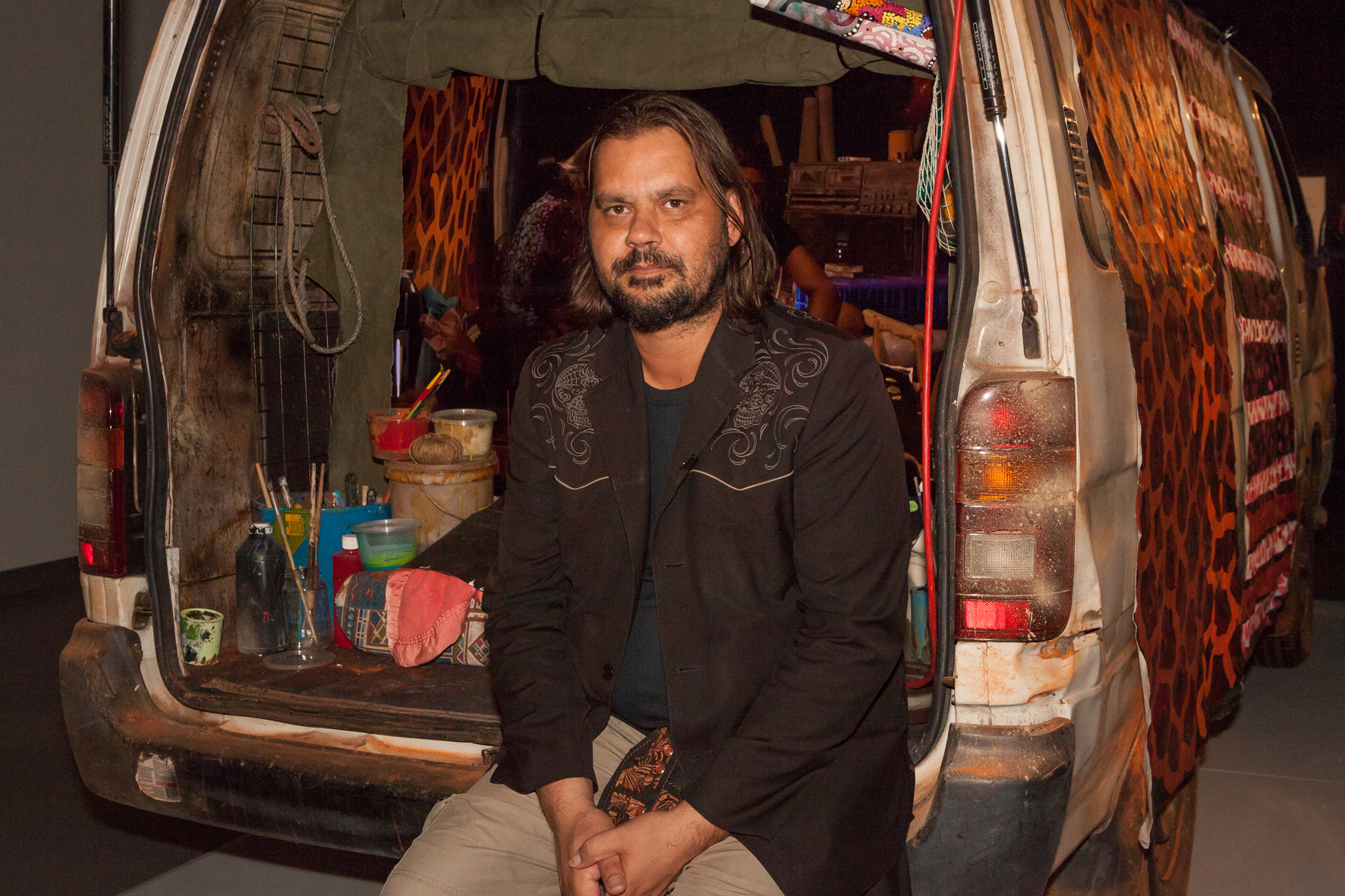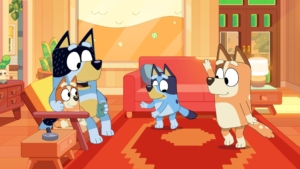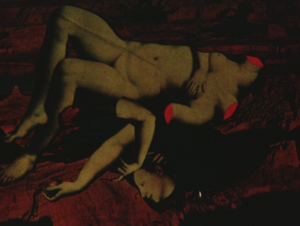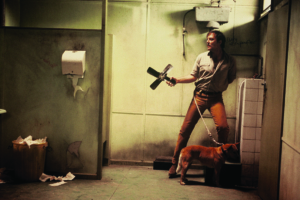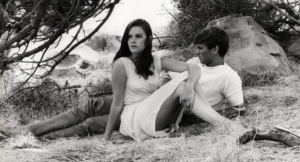The last time I interviewed Warwick Thornton – the week of the 2009 world premiere of his film Samson & Delilah – I met a man glowing with the self-belief of a chosen one. To say the film had been rapturously received by its Adelaide audience would be an understatement. Thornton had experienced some prior success with his short films, but this was something quite different. Everyone felt it (not least this writer, who went on to write a review of the film for Metro,[1]Thomas Redwood, ‘Said in Silence: Samson & Delilah’, Metro, no. 160, Autumn 2009, pp. 26–9. which bordered on ecstatic). Thornton clearly felt it, too. Samson & Delilah was going to not only establish him as a very talented Australian filmmaker, but also propel him into the role of an artist of national significance – a cultural and political representative of Aboriginal Australia. The only uncertainty was how high the film could fly.
Four-and-a-half years later, and with a Caméra d’Or under his belt, it’s quite a different man I’m sitting with. His eyes and voice, previously so fixed and clear, seem a little downcast. Opening-night drinks aside, he looks tired. He spends a lot of time doubling back over his statements. In a word, he seems uncertain. I speak to Thornton in Adelaide; he is here for the world premiere of The Darkside (2013). It’s a minor film, a documentary of sorts, a collection of modern Aboriginal ghost stories acted and recited by professional actors. He’s proud of the film, and rightly so. But he knows that people will be underwhelmed. It’s not the ‘Warwick Thornton film’ everyone is waiting for. He knows people will be asking only one thing: ‘Where’s your follow-up to Samson & Delilah?’ I ask him to explain the challenges that his debut’s success has dealt him.
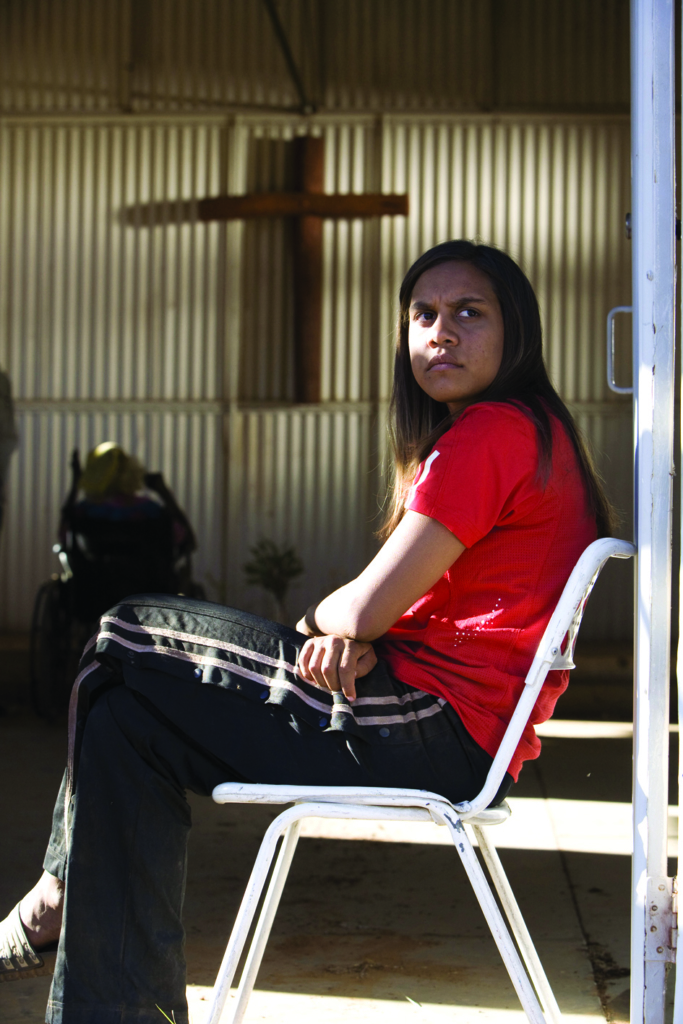
Samson & Delilah was incredibly successful, so in a way you hold onto it for as long as you can to keep yourself feeling alive and to keep yourself feeling successful. You hold it close and you don’t want to let it go. But then […] you wake up three years later and say to yourself, ‘Fuck, I haven’t made anything!’ I’ve written some scripts. I wrote one film called ‘Father and the Son’ and it was the next big thing. But I just haven’t written it very well. I think I have to grow up a little bit more before I can make that film. There has still been this mindset of ‘Let’s go back to Cannes and do wonderful things again. Let’s go one better and win the Palme d’Or.’ But it just never happened. I have actually done a lot of work in film since Samson & Delilah. But I’ve moved in a different direction. I’ve shot a lot of films and documentaries.
As well as his cinematographic work, Thornton has surprised many with a number of video installations. His piece Stranded was showcased at the 2011 Adelaide Film Festival, while Mother Courage was exhibited in Germany’s documenta festival in 2012. To Thornton, the spontaneity of video art and the exploration of different forms of storytelling both allow for the rejuvenation of his creativity.
Not all stories are feature films. There are so many different mediums and I just want to expand and enjoy! The story will tell me what medium it should be made in, and not all of them are going to be feature films. Ideas kind of tell you how they need to be made, in a sense […] I always believe that, as a director, you have to change and learn new skills that suit the story. So you have to reinvent yourself as a director to get that story right, and then you have to change again to suit a new story […] That’s what I have been learning over the last four years. That pressure to put out another Samson & Delilah–esque film pushed me into other mediums, as a visual artist, as a photographer. And I have really enjoyed it.
‘There has still been this mindset of “Let’s go back to Cannes and do wonderful things again. Let’s go one better and win the Palme d’Or.” But it just never happened … I’ve moved in a different direction.’
– Warwick Thornton
The problem with feature films is that you have an idea. Then it takes you a year or two to write it. Then it takes a year or two to fund it. Then it takes a year or two to make it. Suddenly you’re six years down the track – that original idea happened six years ago, and you might actually not like that idea anymore. So you have to be very careful about the next film you choose.
When I put something on the screen, it’s a very personal journey of mine, so it has to be really thought-out: what is it, and do I want to look after that baby for the rest of my life?
As he speaks of his varying ambitions I can’t help but notice an inner wrestling match going on – a struggle between an ambition to create a singular auteurist cinematic vision, and a constant desire to change, mutate and survive as an artist. Speaking of his decision to make The Darkside, Thornton mentions his aspiration to make ‘intelligent horror movies […] that’s where I’m going’. A few minutes later, however, he indirectly suggests that this ambition, too, could just as easily fall by the wayside.
I don’t know. I’m still learning. I contradict myself all the time. I change my mind all the time. Something that is the most important way of making films today, I’ll say ‘Bollocks!’ tomorrow. I don’t have any rules about anything, really.
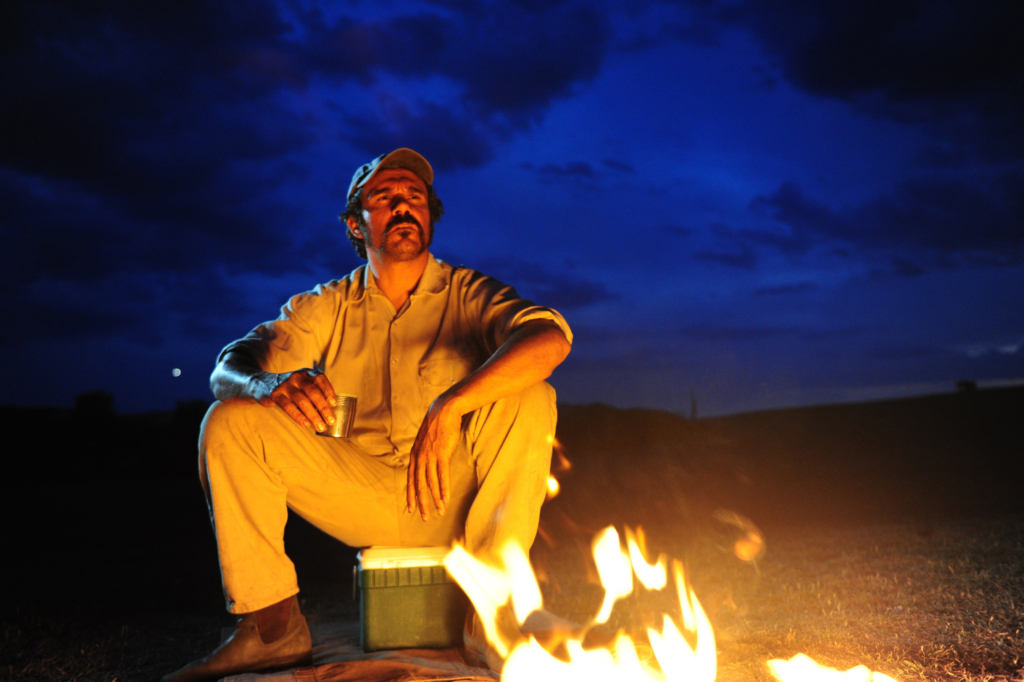
The Darkside keeps this train of inconstancy on track. Thornton calls the film a ‘return’ to his documentary background. But the film’s very definition as a documentary is problematic – not that the film is much interested in questioning the distinction between documentary and fiction. The Darkside simply presents us with stories of the afterlife, collected from Aboriginal Australians and told to us by actors. Even questioning the reality of these stories is not of primary importance. Thornton explains that the matter-of-fact tone of the film is a reflection of the normality of ghosts in Aboriginal social life.
In Aboriginal society, it’s very much a day-to-day coexistence with your ancestors. And I grew up that way. Not in a really strict, traditional, ceremonial way, but there was still a connection with your ancestors, a ‘knowing’ that they are around. Every time you walk in the bush past a tree or a rock, you just know that it’s watching you, and it has a soul and it’s one of your ancestors. That kind of world is something I completely grew up in and, as a kid, it scares the shit out of you! Indigenous cultures celebrated this (and in the desert we still do), just like Japanese and Mexican cultures do. We had ceremonies and dances and long festivals to recognise and respect and strengthen our ancestors. A lot of that has been lost, especially through what has happened in urban areas, where language and culture have been obliterated. So I had the thought that those spirits of ancestors are still around, and perhaps they are also lost because they aren’t being recognised anymore. So I thought, maybe I can make a film that helps us to realise they are still around, and by doing that, maybe they will feel recognised a little bit. The film is very much driven by this idea: that there is another side and that, by talking to [our ancestors], they get stronger and you get stronger.
It’s a far cry from the head-on realist political battering that Thornton meted out to his audience with Samson & Delilah. Yet, with a slightly more subtle degree of reflection, The Darkside reveals that it, too, is potentially a very political film. For in talking about ghosts we are talking about ancestors, which means the past, which for Aboriginal Australians often means injustice or trauma or suffering. ‘It could mean those things,’ he nods. Thornton points to one episode in particular, early on in the film, in which a whole massacred tribe whose very existence has been denied appears to the narrator.
You can’t get any more political than that! What I love about that story and what makes it very political is that it is a piece of oral history. And Aboriginal oral history is not recognised in court. Nothing of our history is recognised unless some anthropologist or missionary from the 1800s wrote it down. But that story is a piece of our oral history: the remembrance of a massacre that is not ‘true’ because it’s not in the history books. So it’s very political and it’s also a great story […] You know, a ghost rocks up, and the ghost has a bullet hole in its head and it’s saying, ‘Hey you! I was shot by a policeman.’ And this ghost isn’t going to go away. It’s not in the history books but it’s not going away. I think that’s awesome. It reminds us of a secret past, or a hidden past, the skeleton in Australia’s cupboard […]
‘As an Indigenous filmmaker, you are always trying to empower your community, whether it’s to have “a good hard look at yourselves” or to instigate some kind of self-esteem.’
– Warwick Thornton
I didn’t set out with any definite political agenda because these are not my stories; they are other people’s stories. But you can recognise something like that in them. Like the episode in the National Film and Sound Archive [of Australia], with those archival images of the blood tests and the skin-colour tests and the cranium measurements.
There’s a powerful idea brought up in that section of The Darkside – the idea of the ‘rights of the dead’.
The rights of the dead […] that’s an incredibly important part of our world. You know, when you’re trying to recognise and respect your ancestors, but their remains are all piled up in shipping containers or in a museum, it’s pretty sad. You see, the remains of these people weren’t logged and labelled properly. So we can’t really put them back in the ground because you can’t put people back in the wrong country. You can create a bad spirit then, because they’re not put back in their rightful country. If you put them somewhere else, they get pissed off. We need to create a hallowed ground, some special place where they can all be buried, so at least they would be back in the ground.
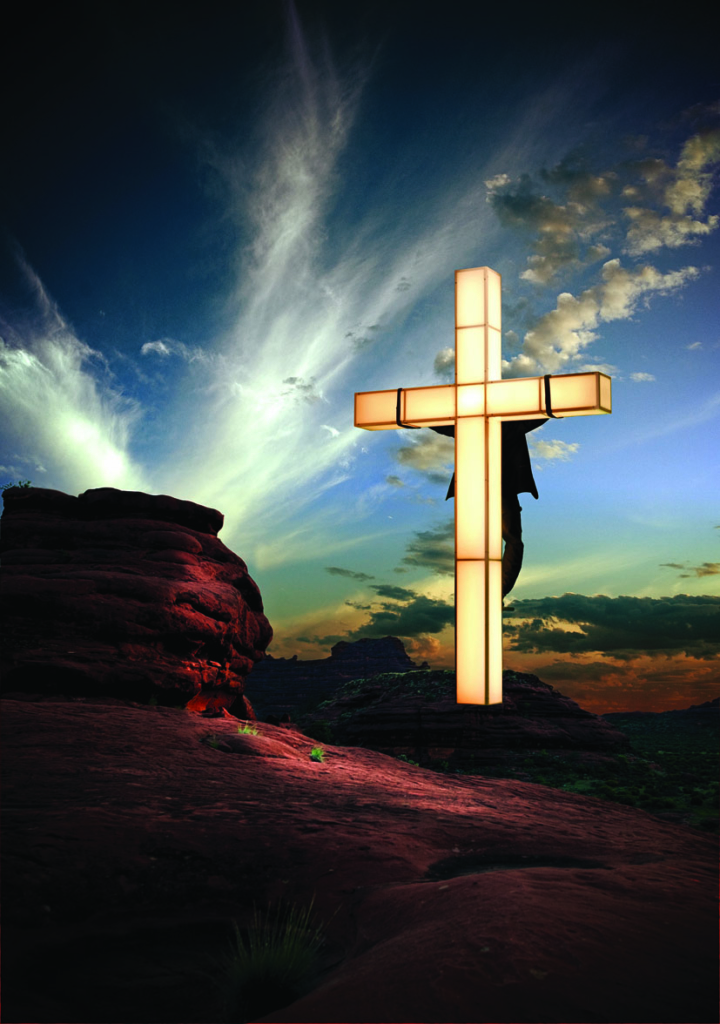
In a culture and a history in which even the dead have to demand their rights, I’m left to wonder if it is even possible for an Aboriginal Australian filmmaker to escape a political raison d’être. Even with a film that aspires towards a simple dialogue with the personal and the spiritual, even with a film that uses other people’s stories, Thornton still seems condemned to remain more political than a non-Aboriginal filmmaker might.
I’m very careful if I do have a political agenda to weave it carefully into the background. But I am totally political. I’m a walking contradiction. They tried to breed us out, and not only through genocide. They tried to breed the Aboriginal out of us. And so, being a half-caste person [as I am], you are a walking political contradiction. Every day, every Aboriginal person is a political walking time bomb. And some people can control it and some people can’t […] I can stop being a filmmaker tomorrow but I can’t stop being Aboriginal.
In response to the question of how screen media can work as a practical force for empowering Aboriginal communities, the director expresses his open disdain for the misguided optimism that permeates so many representations of Aboriginal people in Australia. Going sharply against the grain, Thornton describes Australian film and television’s preoccupation with creating positive Aboriginal role models as little more than a convenient idealisation, a back-slapping avoidance of the real problems facing Aboriginal communities.
The funny ‘type’ character at the moment is the Aboriginal policeman. Every second film or TV show has an Aboriginal cop! Next we’ll have an Aboriginal prime minister, and all the teachers in private schools will be Aboriginal, and all the doctors will be Aboriginal! Bankers too. It’s hilarious. It’s not true, but people are being forced by the party line, ‘You’ve got to write positive roles for Indigenous people!’ But you don’t have to if it’s not fucking true […] It’s all propaganda, in a sense.
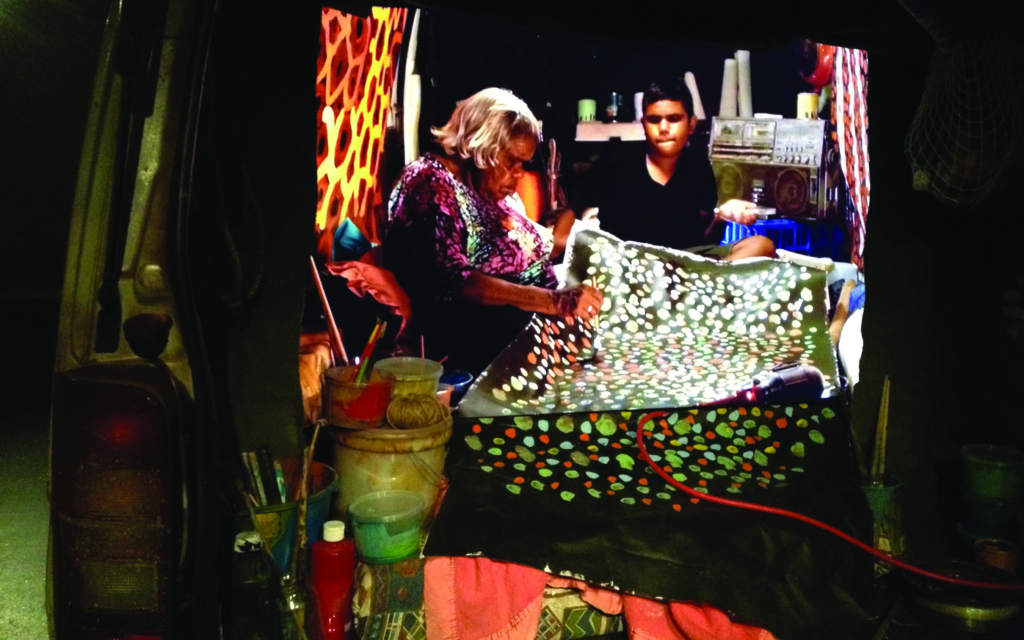
As an Indigenous filmmaker, you are always trying to empower your community, whether it’s to have ‘a good hard look at yourselves’ or to instigate some kind of self-esteem. You see that black-superhero type in movies. And that works for a non-Indigenous audience, too, because they get to see Indigenous people doing great things.
Obviously the flipside of that are those dark, fucked-up films that expose, to our own community, what’s wrong with us, like Samson & Delilah. And it ebbs and flows. For every ‘drunken bum’ character, there’s an incredible old lady who is an empowering artist.
Endnotes
| 1 | Thomas Redwood, ‘Said in Silence: Samson & Delilah’, Metro, no. 160, Autumn 2009, pp. 26–9. |
|---|
